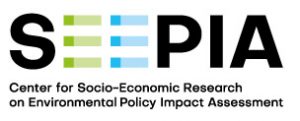Results

Impacts on the economy
- Analysis of Fit for 55. Impact assessment for the Czech Republic
- Benefits and weaknesses of voluntary instruments for environmental protection
- Analysis of selected European Green Deal initiatives

Climate change
- A study of climate projections in the Czech Republic

Agriculture
- Agricultural subsidies supported rather income of farmers than crop diversity
- Options for introducing other economic instruments for adaptation, nature, landscape and biodiversity conservation

Tracking trends
- Monitoring of important changes in relation to the future development of the environment in the CR
- Alternative scenarios for the development of the environment up to 2050

